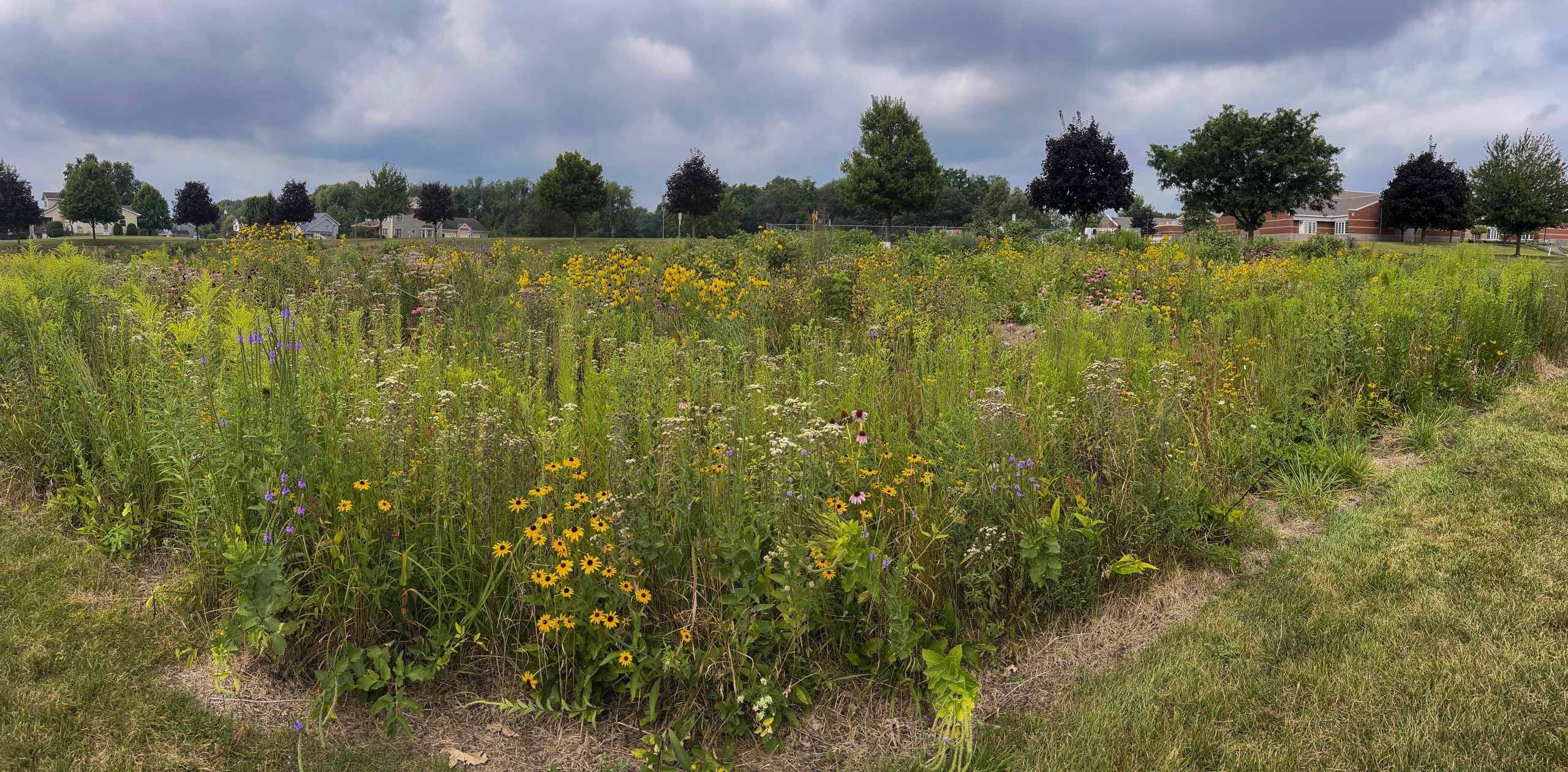by Steve Sass and Amanda Smith, Indiana Nature LLC dba Ecometrid
Recent results of scientific studies on plant and animal decline and biodiversity loss have been frequent national and international news stories. A 2019 study published in Science, a journal by the American Association for the Advancement of Science, concluded that North America has nearly 3 billion fewer birds than we had in 1970. In March 2025, the same journal published another study by researchers from Michigan State, concluding that between years 2000 and 2020, butterfly populations across North America fell by a staggering 22%. To put this decline into perspective, one of every five butterflies in 2000 was no longer present by 2020.
Most reports cite habitat loss as the most common reason for biodiversity decline. The conversion of natural ecosystems into agriculture and other human developments continue to pressure the natural world and its inhabitants.
Even more startling is that habitat loss occurs not only in exotic places such as the Brazilian and Sumatran rainforests but also in northern Indiana. The tallgrass prairies (including Olive Township’s massive Terre Coupee Prairie) that used to cover a large percent of Saint Joseph County are now entirely gone, along with most grassland birds that required them for reproduction. The formerly abundant old-growth forests now occur at only a few scattered sites, such as Bendix Woods Nature Preserve and Rum Village Park. The thousands of acres of wetlands formerly surrounding the Kankakee River in the southern part of the county have been almost entirely drained for agriculture, with our remaining wetlands currently threatened by industrial development.
At the heart of ecosystem health are plants. As autotrophs, through photosynthesis, they convert the Sun’s energy into oxygen and glucose and become the basis of our entire terrestrial food chain. However, not all plants are created equal, and exotic (non-native) plants provide comparatively few ecosystem services as native plants. In other words, many of them are not usable by our Indiana native animals that drive our ecosystems.
Unfortunately, ecological impact has seldom been a consideration to most people when making landscape choices. Driving this trend are box stores and nurseries that have historically stocked their shelves with plants treated with systemic pesticides and species based solely on aesthetic appeal and hardiness without regard for ecological repercussion or cultural significance.
Despite all of the troubling news, there is still room for optimism. If we are to reverse this trend, we must begin by protecting remaining habitats and by sharing our human spaces with the plants and animals that run our ecosystems. By dedicating the majority of its landscape to native plants, the New Carlisle Olive Township Library is taking an important step not only in habitat creation but also in community education, beautification, and cultural appreciation.
The library’s native gardens consist of several distinct areas. The beds around the foundation of the building and the parking lot island contain a mixture of native grasses and forbs intended to provide ecological function and beauty while maintaining a semi-formal appearance. Within this area, at the rear of the building, is a lovely outdoor seating area flanked by native plants, which is a perfect spot to enjoy a book or chat with a friend on a summer day. The Exploration Garden, situated just outside the children’s department, is a maintained space for interactive engagement and recreation in a natural setting, and southwest of the main parking lot is a three-quarter acre meadow/detention pond seeded with a mixture of native prairie plants.
At the beginning of 2024, we took over the stewardship of the library’s native landscaping. Our first step was to take an accurate inventory of the plants and the existing conditions of the gardens. After determining the meadow was in dire need of help, we commenced taking a heavy-handed approach to weed mitigation, which by mid-May resulted in a meadow that no doubt looked shocking to most people. Rest assured, it’s becoming healthier, and by July, it was showing marked signs of improvement, but the process will take time and patience. Last fall, we added additional plant species to the Exploration Garden and meadow in the form of seeds and plugs, and we will continue to monitor and evaluate all of the library’s native landscape.
Because we believe community engagement to be paramount to the gardens’ success, in 2025, we will be stepping up our outreach efforts. This column, the first of its kind, will be continued in future months. Within it, we will provide additional information and insight into local ecology and the state of the library’s landscape. Additionally, this summer, we are hosting three evening guided tours of the native gardens in June, July, and August, and we’d be delighted to have you join us to learn more about the library’s journey to create and maintain a “living library” of ecologically and culturally significant plants and habitats.


